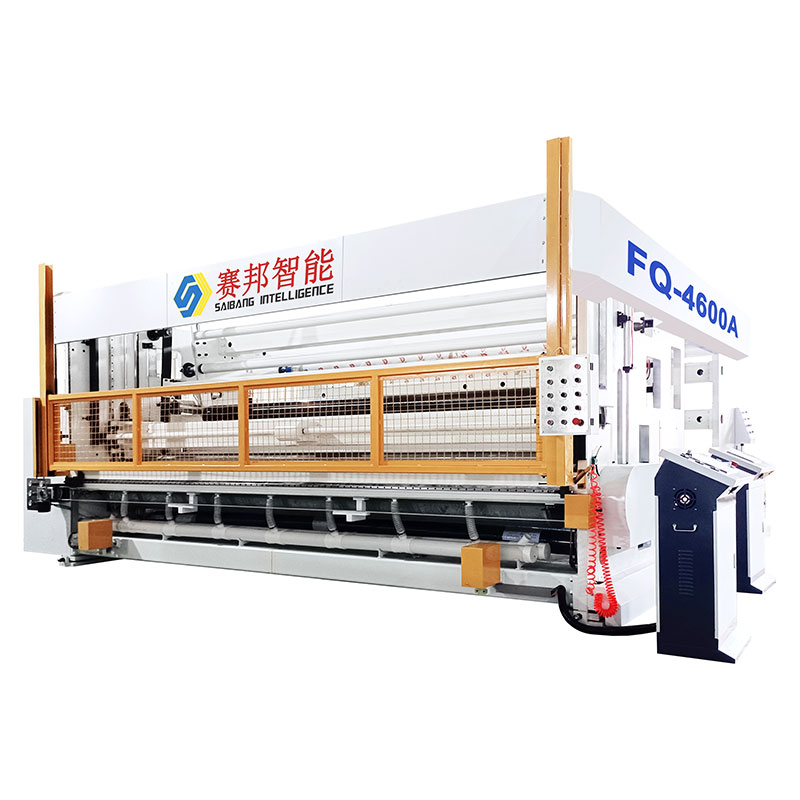How To Operate A Slitter Machine?
A slitter (slitting/rewinding) machine converts a wide master roll into multiple narrower rolls by cutting (razor, shear, or score blades) and rewinding each strip under controlled tension, alignment, and speed. Proper operation is about setup, threading, cutting, rewinding, quality checks, and safe shutdown. Below is a practical, production-floor guide that applies to paper, film, and non-woven slitters.
1) Safety, Checks, and Job Setup
A. Safety essentials (before power-on)
PPE: cut-resistant gloves (for blade areas), safety glasses, steel-toe shoes, and snug clothing. Tie back hair; remove jewelry.
Lock-out/Tag-out (LOTO): de-energize when changing knives, cleaning, or entering guarding zones.
Guards & interlocks: verify all fixed and interlocked guards are in place (infeed, knife bank, nip points, rewind shafts).
Ergonomics & lifting: use hoists or roll handlers; never push a roll by hand at edge of mandrel.
B. Pre-run checks
Machine condition: inspect bearings, air lines, vacuum, PLC/HMI messages, emergency stops, web guides, edge sensors, and laser core aligners.
Blades & spacers: confirm type and sharpness (razor, shear, or score), correct spacers for target slit widths, even overhang, secure lock-nuts.
Cores: right ID for rewind shafts (e.g., 3" / 6"), square edges, dry and clean. Pre-apply double-sided tape for film jobs if needed.
Cleanliness: clear dust, trim waste, and adhesive from idlers; wipe with IPA where appropriate.
Spec sheet review: material, thickness (caliper/μm), master width, target widths & tolerances, roll OD limits, core type, winding sense (in/out), roll count, label scheme.
C. Baseline parameters (by material)
| Material | Typical Knife | Infeed Tension* | Rewind Taper | Notes |
|---|---|---|---|---|
| Paper (60–200 gsm) | Shear | 5–15 N/cm | 5–15% | Shear overlap 0.5–1.0 mm |
| BOPP/PE/CPP film (15–80 μm) | Razor in air or groove | 1–4 N/cm | 10–25% | Use anti-static bar; narrow cores |
| PET film (12–50 μm) | Razor in groove / shear | 2–6 N/cm | 10–20% | Keep web path clean; avoid edge cracks |
| Nonwoven (10–120 gsm) | Rotary crush/score | 2–5 N/cm | 5–15% | Use crowned idlers to prevent wrinkles |
| *Tension values are guidelines; always adjust to web behavior. |
2) Web Loading, Threading, and Knife Setup
A. Load the master roll
Verify roll ID/width matches work order.
Use shafted (air-shaft) or shaftless chucks; center the roll with lasers or mechanical stops.
Inflate air-shaft to manufacturer PSI; check eccentricity and clamp security.
B. Thread the web
Follow the machine’s threading diagram: unwind → infeed nip → tension/drag → web guide → knives → spreader → lay-on → rewind shafts.
Keep idlers clean and aligned; avoid touching the web with bare hands (films).
Zero the web guide (ultrasonic/IR edge sensors) on a clean, consistent edge.
C. Set knives precisely
Shear knives: set vertical overlap (0.5–1.0 mm for paper; less for thin film), and side-load per spec; ensure top and bottom blades are co-planar.
Razor: install into groove or air position; set depth just enough to cut—too deep increases dust and neck-in.
Score/crush: select anvil hardness, set penetration to kiss through without web tearing.
Verify slit widths with gauge blocks or calipers before running.
3) Tension, Speed, and Alignment Controls
A. Tension control loop
Unwind brake/drive maintains master roll tension as diameter changes (use automatic diameter compensation).
Dancer or load-cell feedback closes the loop; tune PID so the dancer stays mid-travel without oscillation.
Taper tension on rewinds: higher at small diameters, reduce as roll builds to prevent telescoping.
B. Speed profile
Start slow (10–20% of rated speed) for first cuts, then ramp up.
Watch for neck-in on films: if excessive, lower tension or knife heat; consider chilled idlers.
C. Edge alignment
Use web guide to keep the reference edge constant; only offset when job spec calls for center-slitting (equal trim both sides).
4) Running the Job: Start-Up → Steady State → Roll Change
A. Start-up checklist
Engage infeed nip; bring web to knives at low speed.
Verify each slit is separated and tracking; adjust spreader or banana roll to remove wrinkles.
Set lay-on pressure uniformly (too much causes corrugations; too little causes baggy edges).
B. Build quality into the run
Measure slit width at start and every roll change (±0.1–0.2 mm typical).
Inspect edges: should be clean, no feathering (paper) or angel hair (film).
Monitor roll profile: no dish, no telescoping, uniform hardness (hand durometer or tap test).
C. Roll change (transfer)
Pre-tape new cores; mark IDs.
When target OD is reached, index lay-on, trigger auto-transfer or manual cut-and-transfer at the splice table.
Label and cut tails, secure with tape or overwrap. Record length/weight.
5) Troubleshooting by Symptom
| Symptom | Likely Causes | Corrective Actions |
|---|---|---|
| Ragged/fuzzy edges (paper) | Shear overlap too small; dull blades; excessive tension | Increase overlap 0.1–0.2 mm; sharpen/replace; reduce web tension |
| Angel hair (film) | Razor too deep; dull blade; high speed/heat | Reduce depth; change blade; lower speed or add air cooling |
| Telescoping (rewind shifts) | Low core friction; wrong taper; uneven lay-on | Increase taper; raise lay-on slightly; ensure cores true and taped |
| Dished rolls (soft center) | Too little tension early; high tension late | Start higher tension, reduce faster; check taper curve |
| Wrinkles before knives | Misaligned idlers; low infeed tension; baggy center/edges | Realign idlers; raise infeed tension; use spreader roll |
| Web wander | Poor edge signal; guide not centered; uneven trim | Clean sensors; re-zero guide; balance trims |
| Blocking (film layers stick) | Hot web; high nip/lay-on; no slip agent | Cool web; lower pressure; add anti-static or slip film if spec allows |
6) Quality Documentation & Changeover
A. Record and verify
Log roll IDs, widths, meterage, tension setpoints, speed, knife type, batch/lot, and QC results.
Keep retain samples per roll for traceability.
B. Efficient changeover
Use color-coded spacer sets for recurring SKUs.
Maintain preset recipes in HMI (tensions, speeds, taper curves, guide offsets).
Stage next job’s knives/cores during current run’s last roll.
7) Routine Maintenance (Operator Level)
Daily: remove dust/trim, empty vacuum, wipe idlers; check blades and guards; drain water from compressed-air traps.
Weekly: inspect dancer bearings, brake pads, web guide sensors; verify load-cell zero; clean static bars.
Monthly: check alignment (laser or string) of idlers and knife shafts; calibrate diameter sensors; verify rewind clutch torque.
Blade care: store in labeled sleeves; follow a sharpening schedule—dull knives are the #1 cause of edge defects and fire risk.
8) Material-Specific Tips
Paper
Aim for slight positive web tension and clean shear. Control humidity to prevent curl. Dust extraction near knife bank reduces lint.
Plastic Film (BOPP, PET, PE)
Use anti-static bars and ionized air. Control neck-in by balancing tension and temperature. Prefer razor-in-groove for thin films.
Nonwoven
Choose score/crush blades with correct anvil hardness. Keep lay-on low to avoid compressing loft; crowned idlers help track soft webs.
Summary
Operating a slitter is about controlling the web—alignment, tension, and cut quality—while staying safe and consistent. Start with rigorous safety checks, load and thread correctly, set the right knife geometry, and dial in tension/taper for the material. Maintain clean edges, stable rewinds, and complete documentation. With sharp blades, clean paths, and disciplined parameters, your slitter will deliver tight, square, defect-free rolls across paper, film, and nonwoven jobs.
Previous: How Much Does A Laminating Machine Cost?



